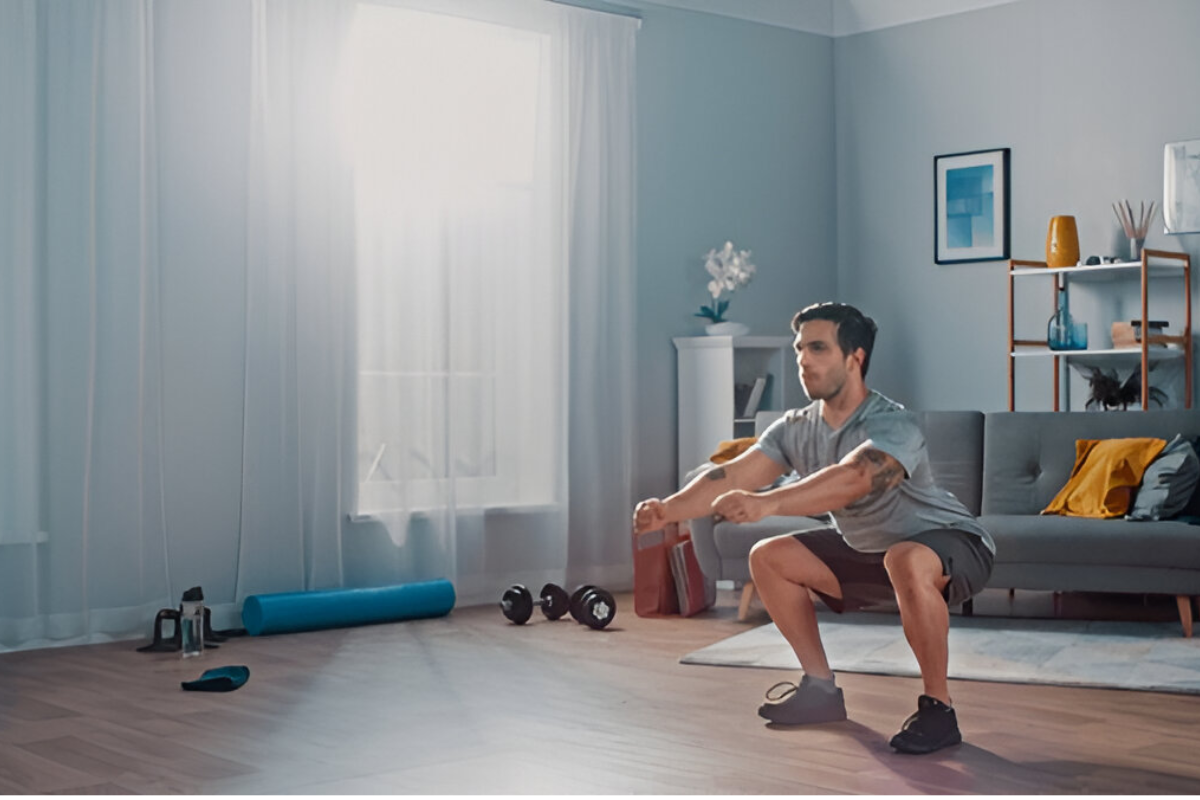
How to Do the Reverse Tabletop Stretch to Loosen Shoulder Tension and Improve Upper Body Mobility
by Nayan in Fitness, Health & Wellness on April 8, 2025Haven’t you ever noticed that after sitting for a long time you feel stiffness in your shoulders or after a hard upper-body workout you found some tightness in your chest? You are not the only one facing these problems. Active adults in the US particularly those who lift weights or sit for hours in front of a screen tend to have shoulder tension quite frequently. But the good news is that a simple stretch is available which is effective and takes you just one minute to do.
The reverse tabletop stretch is a type of bodyweight movement that may alleviate these shoulder and chest tightness issues and at the same time it will work your glutes, arms, and core. The stretch can be an additional part of any of your warm-ups, and also useful for cool-downs and mobility workouts and without any necessary gear.
How this Stretch Works
Several times, the shoulders’ syndromes can be due to muscle imbalances resulting from wrong posture, the front of the body overtraining (push-ups or bench presses, for instance), and the abandoned the stretching exercise. The reverse tabletop movement has the role of setting back your posture by the opening of the front side of the shoulders, activation of the back side of your body, and the perfection of the upper body, arm, and hip’s elasticity.
This stretch is not only a passive, healing exercise but it is also nice for strengthening the glutes and core because the motion is so mild.
How do you execute the Reverse Tabletop Stretch?
The detailed instructions of the moves which you need to follow to do the stretch properly:
- Initially, you are supposed to be in a seated position with your knees bent and your feet placed flat on the floor, with the feet apart at the hip width.
- Then, your hands should be placed on the ground behind you, your fingers should look toward your heels.
- You need to push your hands and feet through the ground to raise the hips to the ceiling.
- You will need to engage your glutes and tense your core so as to create torso and thigh that are parallel to the floor.
- Either keep your head in a neutral position or drop it back gently—let your neck decide which action is more soothing.
- Stay in this position for 20–30 seconds, breathing deeply.
- After that, lower your hips back to the floor but do it slowly and perform the movement 2–3 more times.
Should your wrists be tense, you should turn your fingers lightly out in addition to altering the proximity between your hands and feet to make it the most comfortable arrangement possible.
What It Targets
This one stretch sets off a chain reaction of the key muscle group activation and opening:
- Shoulders (anterior deltoids)
- Chest (pectoralis major and minor)
- Triceps
- Glutes and hamstrings
- Core muscles
As the stretch is primarily concerned with the extension of the shoulders and opening of the chest, it aids the improvement of the upper-body’s mobility as well as decreasing the stiffness in the upper body that results from long hours of sitting down or performing strenuous upper body exercises.
Why You Should Use This Stretch
- Speedy way to alleviate shoulder tension
- Can aid in better posture, especially for those who work sedentary jobs
- Will give you better shoulder movement when you lift
- Engagings glutes and hamstrings in a safe position for movements
- Instilling body awareness and stability
It’s a perfect exercise to complete your cooldown session or your pre-training mobility session in light of the benefits it brings. An alternative is to perform it before a workout, so as to wake up and activate the back of your body.
When to Add It to Your Routine
Give this stretch a try:
- After chest or upper-body days at the gym
- During mobility or flexibility sessions
- As a break from long periods of sitting or driving
- Before yoga or bodyweight workouts
One important thing to think about
Virtually everybody can safely execute the reverse tabletop, but in case you are now located in the shoulder, wrist, or lower back pain, consult a physical therapist or doctor prior to giving it a try. Do not exaggerate by raising your hips too high – at first gently go into the position and remain within the range that does not cause pain.
If you are a complete beginner, start with shorter holds and then progressively increase the time as you get more flexibility. You can also keep your hips lower when needed and still get the advantages of the exercise that opens the shoulders.
The reverse tabletop stretch is one of those unnoticed exercises that give visible results. It is for the beginners; doesn’t take long and aids in the correction of the imbalances we get from the modern world. Either you are weightlifting or having your desk job the addition of the move to your daily activities saves your shoulders and posture, more over your body, from the slump.
A change as little as a minute per day may result in how nice the upper part of the body is in its functionality and feel.








